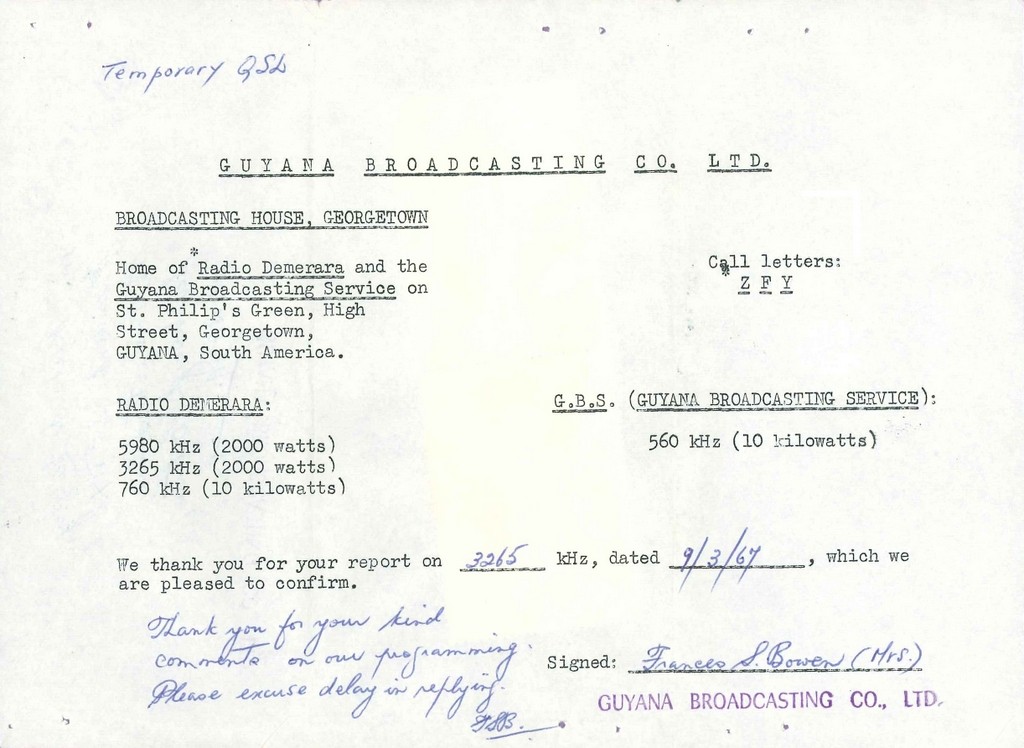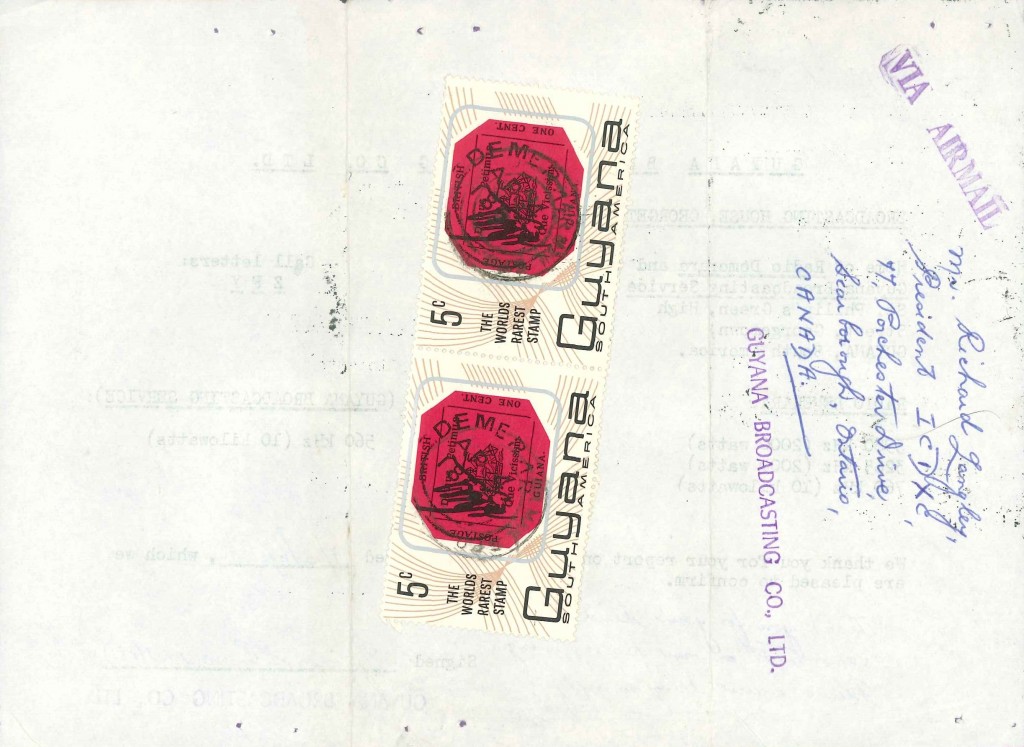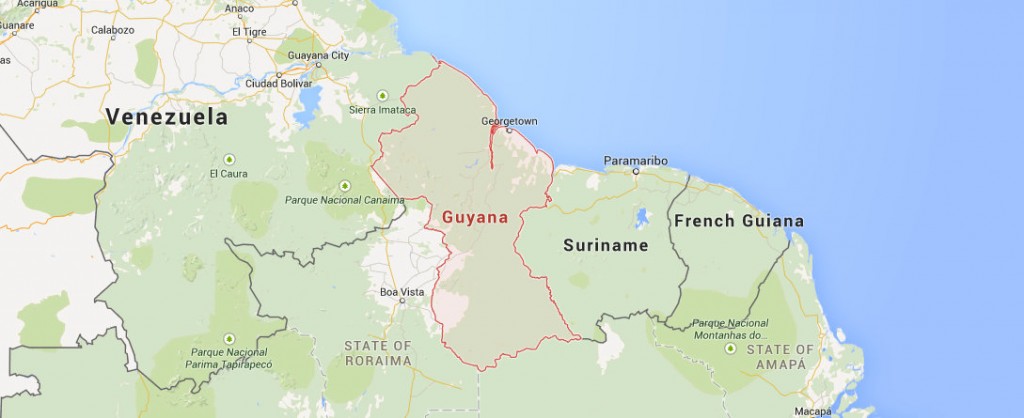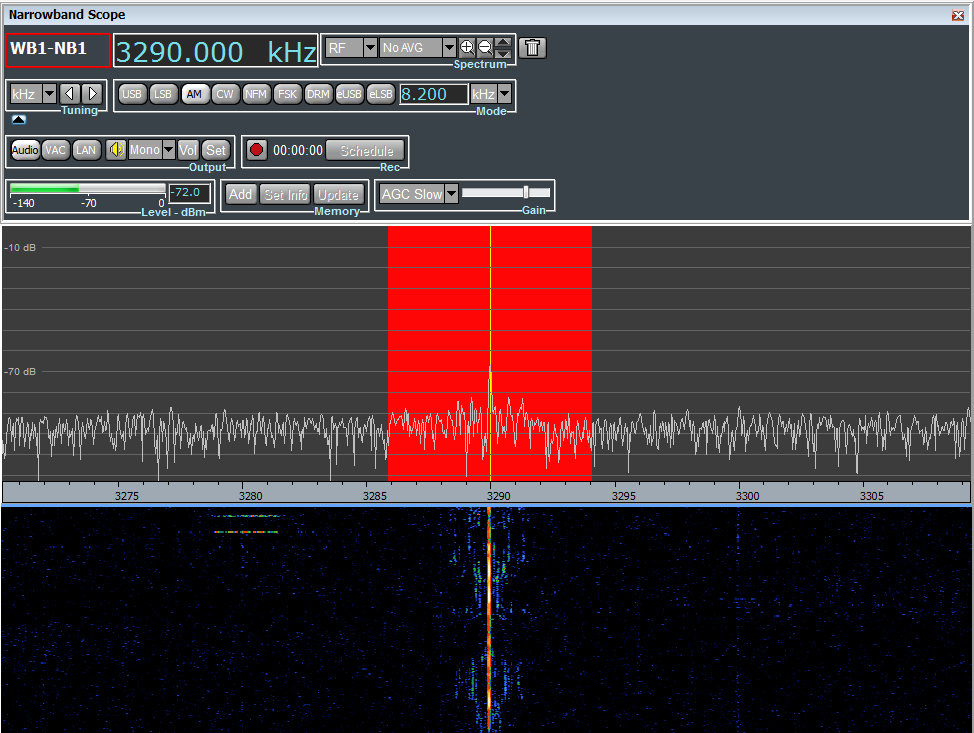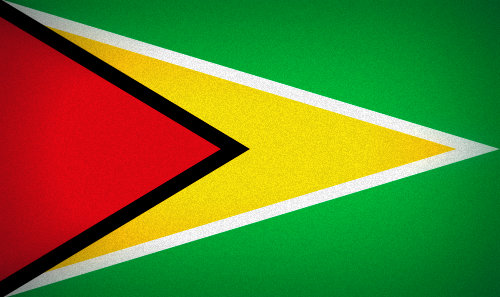 Many thanks to David Goren who shares this dialog between Jamie Labadia and Glenn Hauser via the DX Listening Digest:
Many thanks to David Goren who shares this dialog between Jamie Labadia and Glenn Hauser via the DX Listening Digest:
** GUYANA. Hi Glenn, I have the Voice of Guyana on the air at, don’t laugh, 400 watts. 3.290 MHz is the freq. I am going to repair a few more amplifiers and get them up to about a kilowatt for now. Have to reconfigure the combiner though. The antenna is in rough shape, but surprisingly being heard well down into interior Guyana, which is the main purpose. (On a portable no less!!) I’ll keep you posted on how it’s going. It’s 80 degrees and very “tropical” here now. Best Regards (Jamie Labadia, visiting Guyana, 0147 UT Feb 2, DX LISTENING DIGEST)
Checking around 0300 UT Feb 2, I do have a JBA carrier on 3290- via the DX-398 but not the PL-880 – could be it. Slightly on the lo side; much weaker than 3320 S Africa, 3330 Canada. Will it be on all-night?
After local noise sources diminish, Feb 2 at 0629 I try again, and now a very poor signal on 3290- in English sounds like BBCWS, but not // or not synchro with 9460.
Meanwhile after I post this news ASAP on the DXLDyg, reports come in: Brandon Jordan in TN had it at 0333 on 3289.973, 0359 switching to BBC overnight feed just like they used to do. Bruce Portzer in Seattle also had a carrier around 0500. Daniel Wyllyans in Brasil was already hearing it as an unID. Forwarded these reports to Jamie and he replies at 1127 UT Feb 2:
“Yes, That’s us!! That was a repeat of the Sunday afternoon program. Made for great listening while working on the amplifiers — Nat King Cole, Glenn Miller, Woody Herman. Thanks to all of the great DXers out there. I will be working on the transmitter until just after local sundown, then leave it on the air until the next morning. Glenn, thank you very much for this great resource. Surprised more engineers aren’t using it as their “remote S meter”!! Jamie“
He said he planned to put V of Guyana on a higher frequency for better domestic coverage. 5950 used to be the daytime channel on the originally 10-kW transmitter, and it might be OK in the daytime now with possible het from Bolivia on 5952+, but at night there would be clashes from Germany, Iran, Ethiopia; and R. Pio XII until it closes (Glenn Hauser, OK, DX LISTENING DIGEST)
If you like to follow DX news closely, consider joining the DX Listening Digest email list and make sure you listen to World of Radio with Glenn Hauser. Many thanks to GH for permission to re-post this.
Additional note (06 Feb 2015): SWLing Post reader, Harald DL1ABJ, writes:
Dear Thomas,
Guyana was active on 3290 kHz till June 2012 when the transmitter went faulty. It was a new 10 kW unit installed only in April 2010.
Before 2010 the station was inactive on shortwave for a longer period.
Reception on 3290 kHz was quite ok during good dx conditions here in Central Europe. I even managed to catch their signal on 5950 kHz once during the 1980s or 1990s.
Kind regards
Harald DL1ABJ

